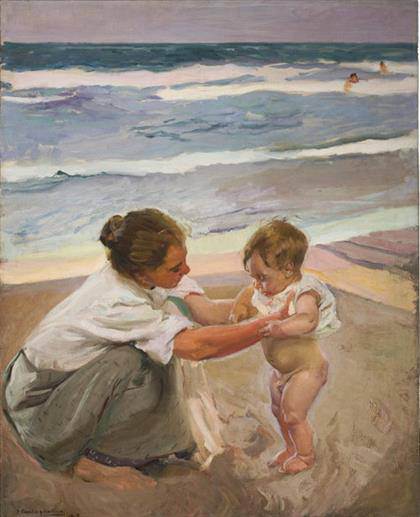
Gustav Klimt: Adam and Eve
1917-18
Gustav Klimt’s ‘Adam and Eve’ travels to Boston ‘Visiting Masterpiece: Gustav Klimt’s Adam and Eve’, features Klimt’s monumental ‘Adam and Eve’ (1917-1918) alongside the MFA’s life-sized portrait of a couple, ‘Two Nudes (Lovers)’ (1913), by Klimt’s Viennese colleague, Oskar Kokoschka. January 17 – April 27, 2015.]]>
January 18, 2015, source: Museum of Fine Arts, Boston (MFA)
For the first time in its history, the Museum of Fine Arts, Boston (MFA), is displaying a painting by Gustav Klimt (Austrian, 1862–1918)—among the most important artists of the early 20th century.
Both “Adam and Eve” and “Two Nudes (Lovers)” reflect a relatively liberated side of turn-of-the-century Vienna, where Freud first practiced psychoanalysis and both artists conducted passionate affairs. But these paintings also indicate an ambivalent attitude toward women and a pessimistic view of relations between the sexes. In “Adam and Eve” —which was left unfinished in Klimt’s studio upon his death— Eve’s left hand would almost certainly have held the fatal apple, though Klimt chose to represent not the moment of Eve’s temptation and fall, but her creation from a rib of the sleeping Adam. In “Two Nudes (Lovers)”, the figures seem to circle each other against a background of blue-green vegetation —Eden, perhaps, but not quite paradise. Complementing the two paintings are drawings by Klimt, who was a prolific draftsman. In these works on paper, Klimt studied gestures, poses and expressions to convey a particular psychological state. In “Portrait of a Young Woman” (about 1914) and “Woman in Kimono” (1917–18), the downcast eyes and turned heads suggest anxiety or pensiveness in contrast to the assertive face and open eyes of Eve.
Nearly 30 years Klimt’s junior, Egon Schiele (Austrian, 1890–1918) first met Klimt in 1907. Schiele’s drawing, “Kümmernis (Sorrow)” (1914), and his watercolor, “Schiele’s Wife with her Little Nephew” (1915) convey raw emotion through agitated lines and distortions of the human form. Like Klimt, Schiele’s figures occupy ambiguous spaces, though unlike Klimt’s sensual Eve, Schiele’s female figures defy traditional notions of beauty. The installation also includes a work by Swiss modernist painter Ferdinand Hodler (1853–1918), who came to know Klimt through the Vienna Secession, an exhibition society devoted to raising awareness of artistic developments outside Austria. His poster, “Secession (Ver Sacrum)” (Sacred Spring) (1904), was made for the Vienna Secession exhibition of 1904. The final object in the exhibition is for a poster for “Fromme’s Calender” (1899) by Koloman Moser (Austrian, 1868–1918), a close associate of Klimt’s and a founder of the design collaborative, “Wiener Werkstätte”. The enigmatic image and the woman’s intense, almost hypnotic gaze underscore the anxiety of fin-de-siècle Vienna.
Related content
Magnificent portrait by Gustav Klimt to be offered at Christie’s (news, 2010)
Follow us on:


